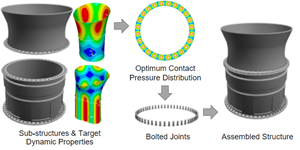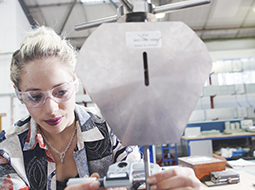-
Study
-
Quick Links
- Open Days & Events
- Real-World Learning
- Unlock Your Potential
- Tuition Fees, Funding & Scholarships
- Real World Learning
-
Undergraduate
- Application Guides
- UCAS Exhibitions
- Extended Degrees
- School & College Outreach
- Information for Parents
-
Postgraduate
- Application Guide
- Postgraduate Research Degrees
- Flexible Learning
- Change Direction
- Register your Interest
-
Student Life
- Students' Union
- The Hub - Student Blog
- Accommodation
- Northumbria Sport
- Support for Students
-
Learning Experience
- Real-World Learning
- Research-enriched learning
- Graduate Futures
- The Business Clinic
- Study Abroad
-
-
International
International
Northumbria’s global footprint touches every continent across the world, through our global partnerships across 17 institutions in 10 countries, to our 277,000 strong alumni community and 150 recruitment partners – we prepare our students for the challenges of tomorrow. Discover more about how to join Northumbria’s global family or our partnerships.
View our Global Footprint-
Quick Links
- Course Search
- Undergraduate Study
- Postgraduate Study
- Information for Parents
- London Campus
- Northumbria Pathway
- Cost of Living
- Sign up for Information
-
International Students
- Information for International Students
- Northumbria and your Country
- International Events
- Application Guide
- Entry Requirements and Education Country Agents
- Global Offices and Regional Teams
- English Requirements
- English Language Centre
- International student support
- Cost of Living
-
International Fees and Funding
- International Undergraduate Fees
- International Undergraduate Funding
- International Masters Fees
- International Masters Funding
- International Postgraduate Research Fees
- International Postgraduate Research Funding
- Useful Financial Information
-
International Partners
- Agent and Representatives Network
- Global Partnerships
- Global Community
-
International Mobility
- Study Abroad
- Information for Incoming Exchange Students
-
-
Business
Business
The world is changing faster than ever before. The future is there to be won by organisations who find ways to turn today's possibilities into tomorrows competitive edge. In a connected world, collaboration can be the key to success.
More on our Business Services-
Business Quick Links
- Contact Us
- Business Events
- Research and Consultancy
- Education and Training
- Workforce Development Courses
- Join our mailing list
-
Education and Training
- Higher and Degree Apprenticeships
- Continuing Professional Development
- Apprenticeship Fees & Funding
- Apprenticeship FAQs
- How to Develop an Apprentice
- Apprenticeship Vacancies
- Enquire Now
-
Research and Consultancy
- Space
- Energy
- AI and Tech
- CHASE: Centre for Health and Social Equity
- NESST
-
-
Research
Research
Northumbria is a research-rich, business-focused, professional university with a global reputation for academic quality. We conduct ground-breaking research that is responsive to the science & technology, health & well being, economic and social and arts & cultural needs for the communities
Discover more about our Research-
Quick Links
- Research Peaks of Excellence
- Academic Departments
- Research Staff
- Postgraduate Research Studentships
- Research Events
-
Research at Northumbria
- Interdisciplinary Research Themes
- Research Impact
- REF
- Partners and Collaborators
-
Support for Researchers
- Research and Innovation Services Staff
- Researcher Development and Training
- Ethics, Integrity, and Trusted Research
- University Library
- Vice Chancellors Fellows
-
Research Degrees
- Postgraduate Research Overview
- Doctoral Training Partnerships and Centres
- Academic Departments
-
Research Culture
- Research Culture
- Research Culture Action Plan
- Concordats and Commitments
-
-
About Us
-
About Northumbria
- Our Strategy
- Our Staff
- Our Schools
- Place and Partnerships
- Leadership & Governance
- University Services
- Northumbria History
- Contact us
- Online Shop
-
-
Alumni
Alumni
Northumbria University is renowned for the calibre of its business-ready graduates. Our alumni network has over 253,000 graduates based in 178 countries worldwide in a range of sectors, our alumni are making a real impact on the world.
Our Alumni - Work For Us
Clamping Force Relaxation-Based Bolted joint Design to Prevent Failure
 Bolted
joints are extensively used in various engineering applications across
industries such as aerospace, automotive, transportation, and energy. These
joints are often subjected to dynamic loads across a wide frequency range that
can cause vibration in the connected substructures. However, under dynamic
loading, bolted joints may experience a loss in clamping pressure, known as
relaxation, which can result in vibrational loosening. If left undetected, this
loosening can cause serious consequences, such as train derailments. For
instance, the 2002 London (Potters Bar) WAGN train derailment and the 2007
Grayrigg (Cumbria) WCR train derailment were caused by loose bolts, leading to
fatalities and injuries.
Bolted
joints are extensively used in various engineering applications across
industries such as aerospace, automotive, transportation, and energy. These
joints are often subjected to dynamic loads across a wide frequency range that
can cause vibration in the connected substructures. However, under dynamic
loading, bolted joints may experience a loss in clamping pressure, known as
relaxation, which can result in vibrational loosening. If left undetected, this
loosening can cause serious consequences, such as train derailments. For
instance, the 2002 London (Potters Bar) WAGN train derailment and the 2007
Grayrigg (Cumbria) WCR train derailment were caused by loose bolts, leading to
fatalities and injuries.
Moreover, bolt loosening can have economic and environmental implications, such as rail lines being closed for months for maintenance after a derailment, or environmental damage caused by fuel spills in freight train derailments. Despite the significant risks, bolted joints are not designed to prevent loosening. The current state-of-the-art practices for bolted joint design are based on static and fatigue requirements, which do not take into account conditions that can trigger loosening after installation. Although some techniques are used to reduce loosening after installation, they are not always effective. An alternative approach used in rail tracks is continuous welded rail (CWR), which is a permanent joint strategy but lacks the advantages of bolted joint connections.
This project seeks to revolutionize bolted joint design for railway applications by proposing a novel approach that accounts for the dominant factors of loosening dynamics and the conditions triggering it. To achieve this goal, an in-depth understanding of the bolt loosening phenomenon and a sophisticated model formulating its inherent dynamics are required. The accuracy of the developed strategy will be validated through a combination of numerical simulations and experimental investigations. The proposed approach has the potential to create a significant impact on bolted joint design, benefiting rail companies in the improvement of rail line reliability and enhancing safety, thereby saving human lives and preserving the environment.
Faculty: Engineering and Environment
Department: Mechanical and Construction Engineering
Principal Supervisor: Dr Hassan Jalali
Recent publications by supervisors relevant
to this project
[1] Jalali, Jamia, Friswell, Khodaparast, Taghipour, Mech Syst Signal Process., 179 (2022) 109339.
[2] Jamia, Jalali, Taghipour, Friswell, Khodaparast, Mech Syst Signal Process. 153 (2021) 107507.
[3] Jalali, Khodaparast, Madinei, Friswell, Mech Syst Signal Process. 129 (2019) 645-658.
[4] Jalali, Khodaparast, Friswell, J Sound Vib. 447 (2019) 186-204.
Eligibility and How to Apply
Qualification
Applications are invited from exceptional candidates who have a good first or upper second class degree (or equivalent) in Mechanical Engineering. Students who are not UK/EU residents are eligible to apply, provided they hold the relevant academic qualifications, together with an IELTS score of at least 6.5. This project is well suited to motivated and hard-working candidates with a keen interest in vibration analysis and structural dynamics. The applicant should have excellent communication skills including proven ability to write in English.
For more information and informal enquiries please contact Dr Hassan Jalali
Further details of the application process and entry requirements can be found here: https://www.northumbria.ac.uk/research/postgraduate-research-degrees/how-to-apply
Deadline for applications: 1st December for March (following year) start; 1st July for October (same year) start.
Start Dates: March and October of each year
Researchers within our Future Engineering multidisciplinary research theme are exploring what technologies will be heating our homes and driving our cars in 20 years time.
Get an insight into life at Northumbria with videos and 360 panoramas of the Department of Mechanical and Construction Engineering.




